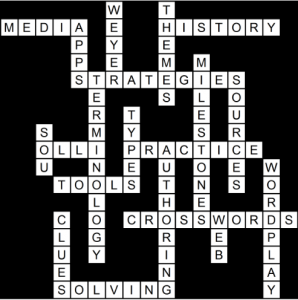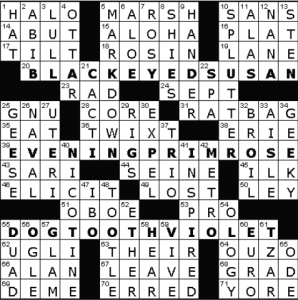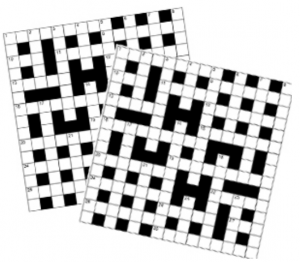The Modern crossword puzzle evolved from Arthur Wynne, published in “The New York Sunday World” on December 21, 1913. Although he thought it would be another normal puzzle but way more than his expectations, it attracted many enthusiasts.
The symmetrical grid became convention within months, and there was a certain elegance about it. Most newspapers have numbers sets, approximately 30 grids available to the compilers who chose the best one.
A few have syndicated puzzles in the evening papers having 12 grids used in the sequence, so that same grid is used every week.

The pleasing elegance of symmetrical crossword grid
crossword puzzle offers the advantage of seamless proofreading. The black square grid can be checked by folding the newspaper half and holding up to the light. Further, the solution also follows the symmetry.
If someone begins with the first crossword clue and reads the solution down to the middle across clue. You will find the sequence is repeated starting with the final across a clue and reading up to the middle.
In my initial years of reading the clues to find the right answers, I concentrated entirely on the clues and didn’t notice the grid pattern at all. But as a ‘smart’ solver today, I respect the grid too much. The most visible grid property is its appearance.
Shape and size of cryptic crossword
A typical cryptic crossword puzzle is a square 15 x 15 in size, but this may vary. The grids used by The Guardian. The New York Times, LA Times, have symmetric puzzles. The size can be as large as 25 x 25 (depends) that become a challenging puzzle.
The standard cryptic grid is a blocked grid. This means there is a pattern of black and white squares within the grid. Every square is termed as a ‘cell.’ The series of white squares in which answers are filled is called ‘lights,’ the black ones are called ‘darks’ or ‘blacks’ or ‘blocks’.
Cryptic puzzle rotational symmetry
All mainstream crossword grids have 180° rotational symmetry or two-way symmetry. This means when you turn the grid upside down, the black and white square doesn’t change their position. A few grids have 90 symmetry having four-way or quarter-turn symmetry.h3>Black space distribution of crossword puzzle
Good cryptic crossword puzzles have a balanced spread of dark vs. lights. You can’t see huge black shapes or clusters of white within the grid. This helps in easily solving the puzzle.
1. Freeform Grid

– No internal symmetry
– Big black shapes
2. American (Quick) Crossword Grid

– Usually 15 x 15
– Half-turn rotational symmetry
– Higher white:black ratio
– Clusters of white
3. Cryptic Crossword Grid

– Square, 15 x 15
– Half-turn rotational symmetry
– No clusters of white or black
To have more fun, play the interesting online crossword puzzle game smartly when you know the symmetry of crossword.
